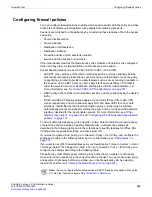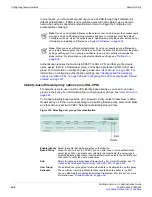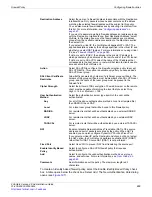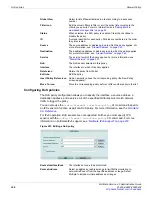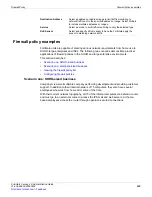
Firewall Policy
Configuring firewall policies
FortiGate Version 4.0 Administration Guide
01-400-89802-20090424
331
•
For more information, see the “Defining firewall policies” chapter of the
Configuring SSL VPN identity-based firewall policies
For network users to use SSL-VPN identity-based policies, you must configure users, add
them to user groups, and then configure the policy.
To create an identity-based firewall policy (SSL-VPN), go to
Firewall > Policy > Policy
and
select
Create New
and enter the information in the following table. Select
Action > SSL
VPN
.
For more information, see
“Configuring firewall policies” on page 323
Inbound NAT
Select to translate the source IP addresses of inbound decrypted packets into
the IP address of the FortiGate interface to the local private network.
Outbound NAT
Select only in combination with a
natip
CLI value to translate the source
addresses of outbound cleartext packets into the IP address that you specify.
When a
natip
value is specified, the source addresses of outbound IP packets
are replaced before the packets are sent through the tunnel. For more
information, see the “firewall” chapter of the
Note:
For a route-based (interface mode) VPN, you do not configure an IPSec firewall
policy. Instead, you configure two regular ACCEPT firewall policies, one for each direction
of communication, with the IPSec virtual interface as the source or destination interface as
appropriate.
Note:
The SSL-VPN option is only available from the Action list after you have added SSL
VPN user groups. To add SSL VPN user groups, see
Summary of Contents for Gate 60D
Page 705: ...www fortinet com...
Page 706: ...www fortinet com...







